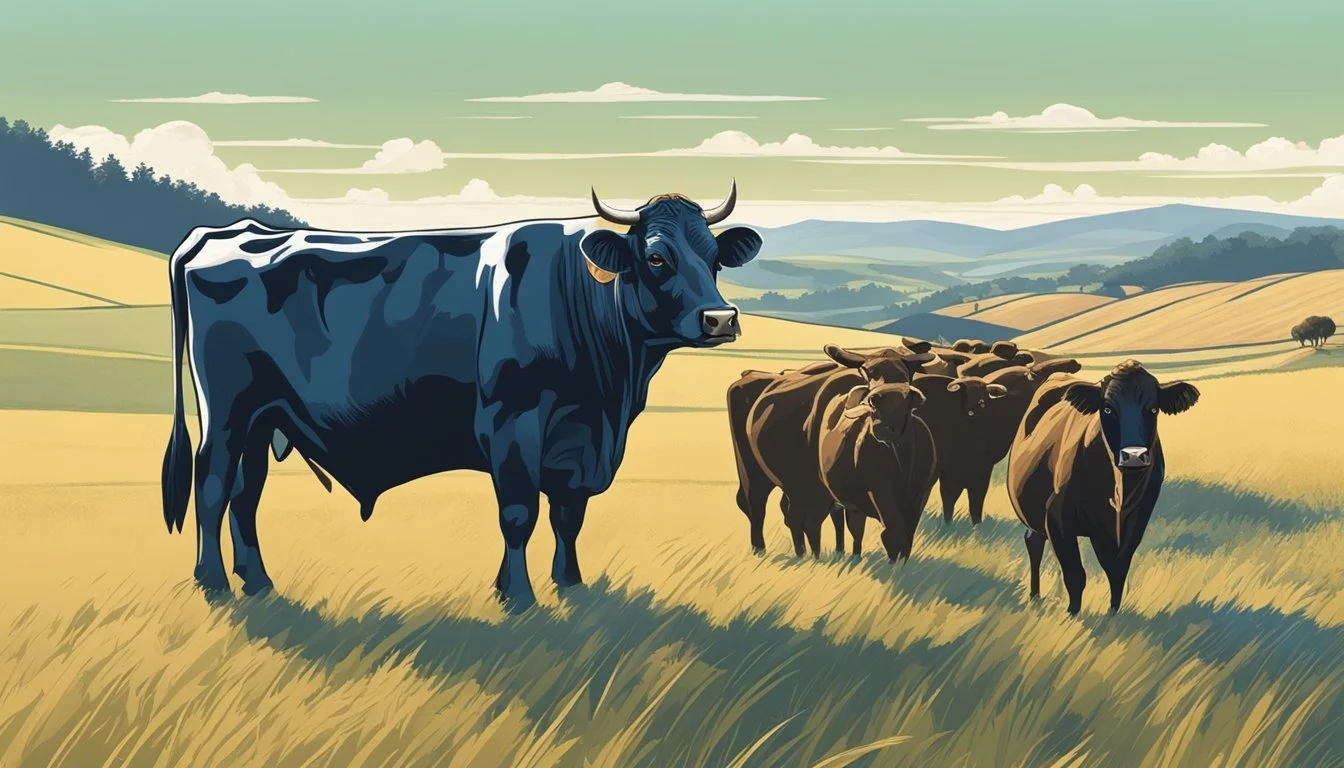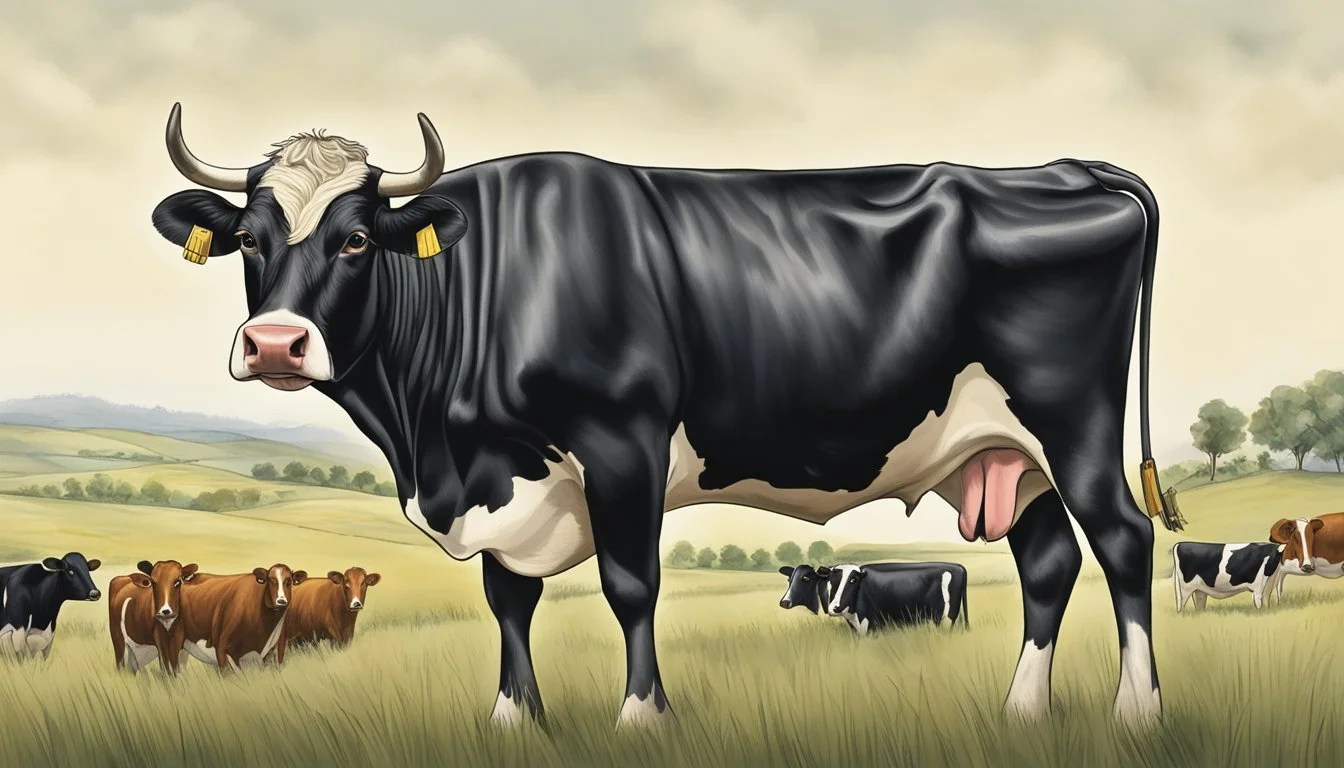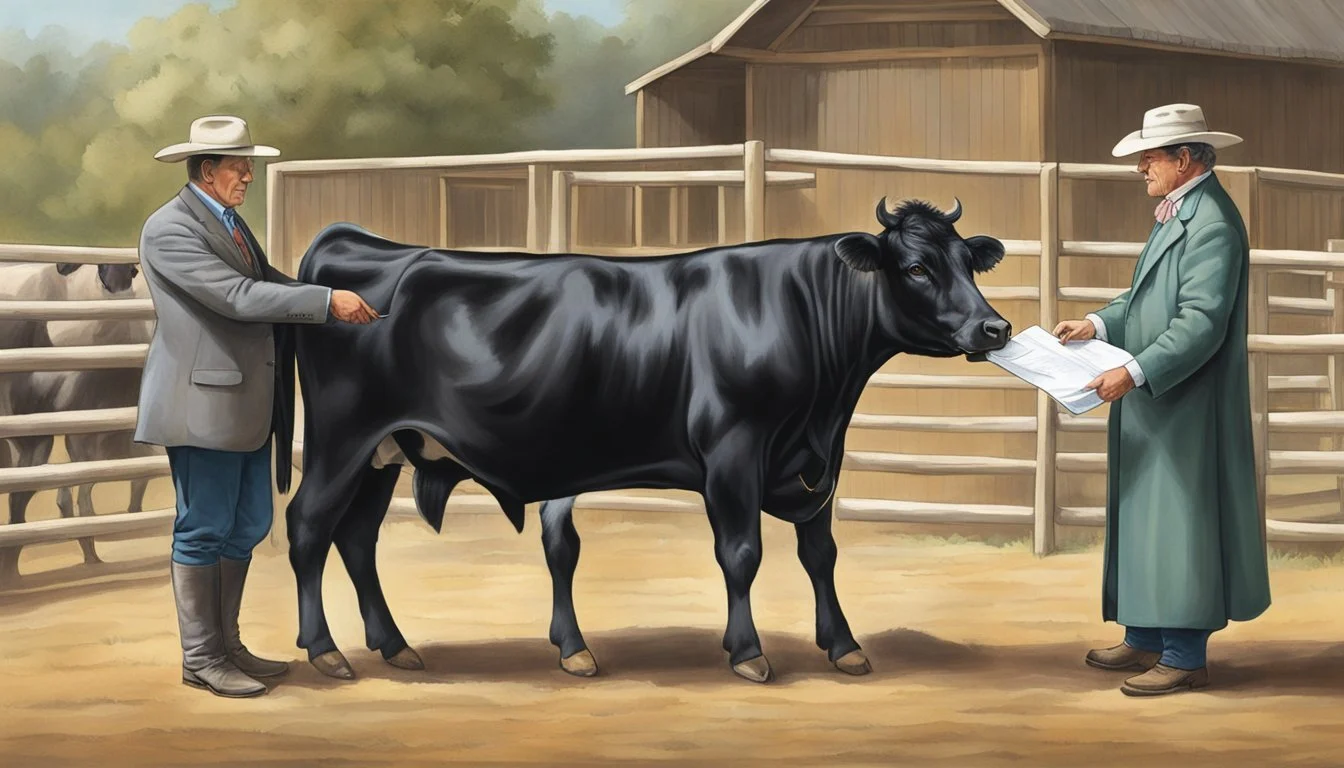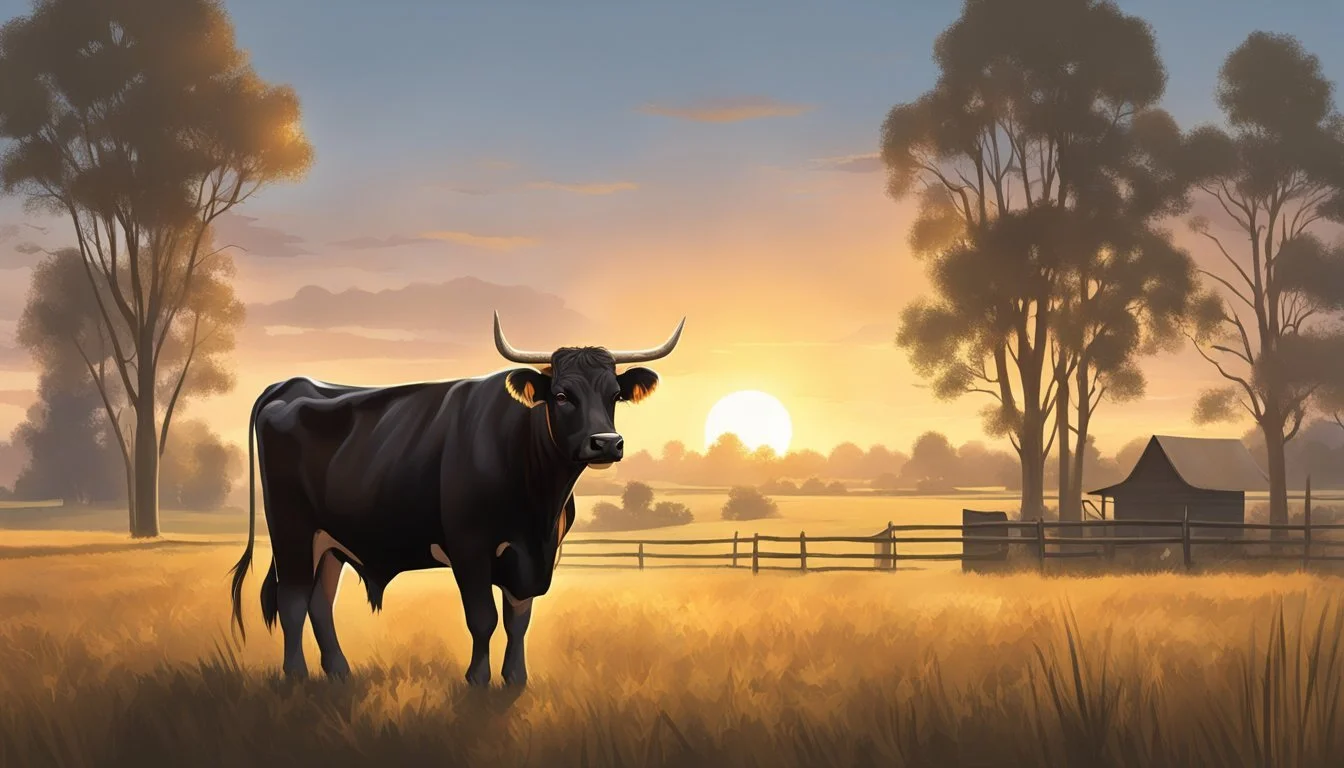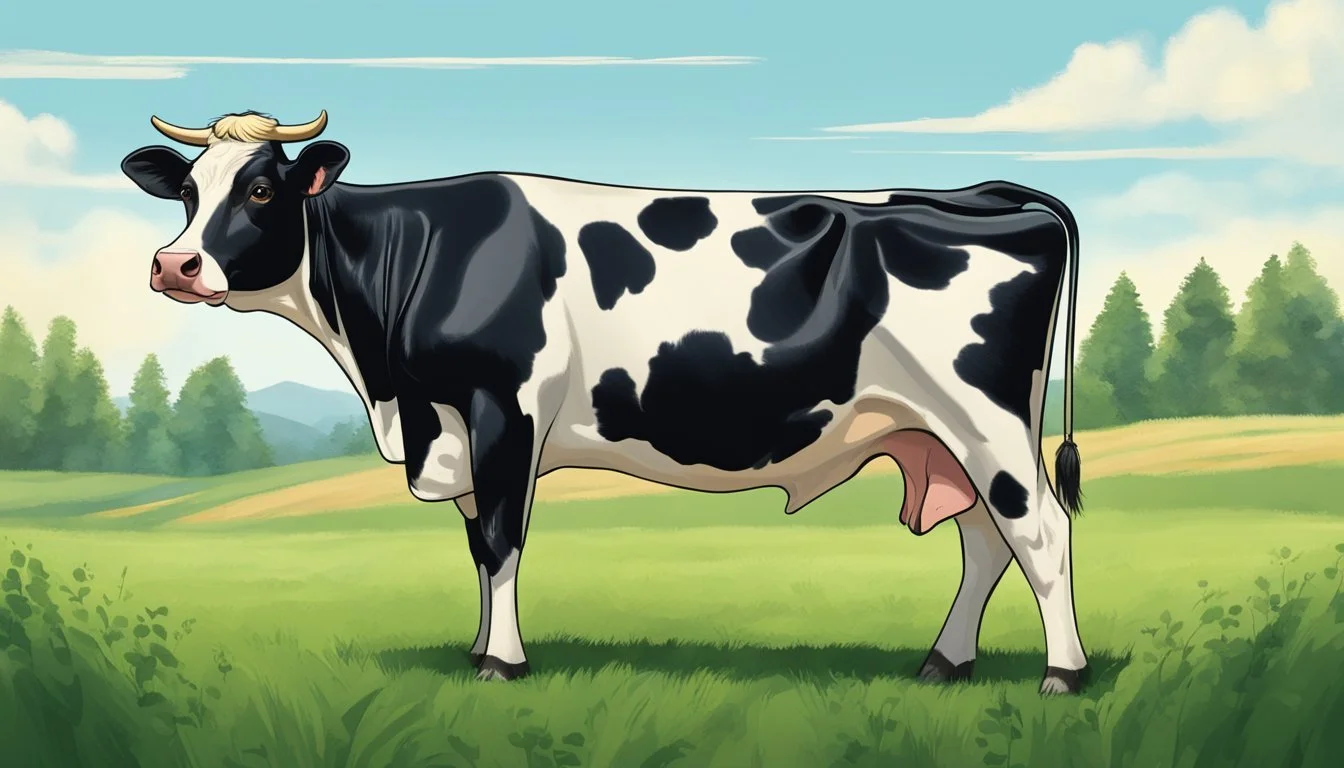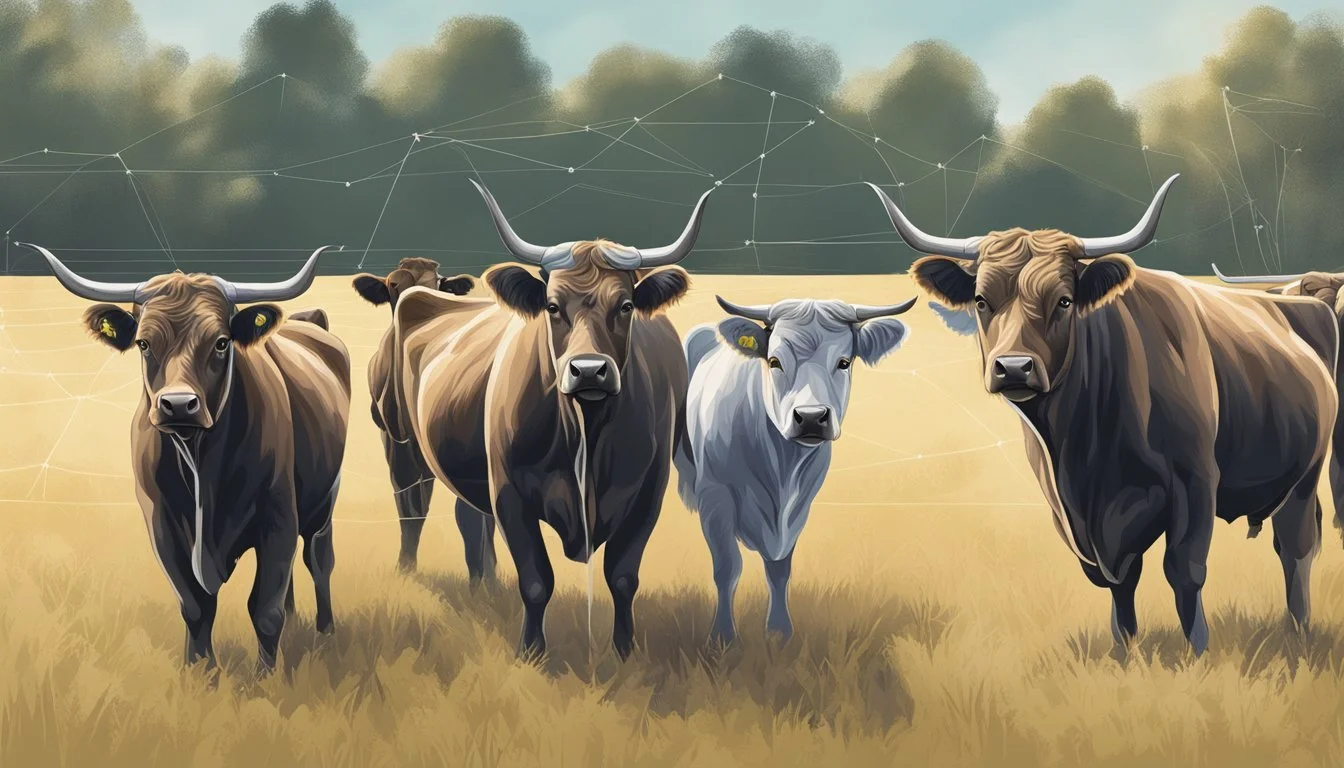How to Document Your Dexter Cattle's Pedigree
Importance and Best Practices
Maintaining accurate documentation of a Dexter cattle's pedigree is a crucial aspect of livestock management. Pedigrees provide a detailed record of an animal's lineage, highlighting its ancestry and genetic background. This information is vital for breeders who aim to preserve specific traits and for farmers interested in the health and quality of their herds. The American Dexter Cattle Association (ADCA) sets guidelines for registering and documenting pedigree information, ensuring that there's a reliable system in place for tracking cattle genealogy.
The significance of documenting a Dexter cattle's pedigree goes beyond mere record-keeping. It plays a key role in maintaining breed standards and allows for informed breeding decisions. By understanding an animal's heritage, breeders can predict certain physical and temperamental traits, susceptibility to disease, and overall performance. Additionally, well-documented pedigrees are often required for participation in shows and are a valuable tool for marketing livestock, as they provide potential buyers with assurance of the cattle's quality and breed integrity.
The Importance of Documenting Pedigree
Documenting the pedigree of Dexter cattle is a critical practice for maintaining the integrity and history of the breed. It ensures the continuity of quality for both meat production and dairy purposes due to their dual-purpose nature.
Understanding Pedigree Significance
Pedigree refers to the recorded ancestry or lineage of an animal. In the context of Dexter cattle, the pedigree holds details about each animal's forebears and their traits. Knowledge of pedigree is essential for breeders who need to ensure the genetic health and diversity of the livestock. A well-documented pedigree can provide transparency about the Dexter's heritage, confirming its purebred status and helping to trace its lineage back through multiple generations.
Genetic Health: A record of any hereditary conditions or traits.
Breed Purity: Confirmation that the Dexter cattle are genuine and not crossbred.
Lineage Tracking: Ability to follow the animal's ancestry through generations.
Benefits of Pedigree Documentation
Pedigree documentation brings multiple benefits to livestock management.
Quality Assurance: Maintaining a record of pedigrees helps breeders select the best animals for breeding, ensuring that the desirable traits for meat and dairy are preserved and enhanced.
Registration Eligibility: Many associations, like the American Dexter Cattle Association, mandate a documented pedigree for registration, which can enhance the value and marketability of the cattle.
Informed Breeding Choices: Breeders can make better-informed decisions to avoid inbreeding and to strengthen specific traits, aligning with the dual-purpose nature of Dexter cattle.
In conclusion, documenting pedigree is not just about maintaining records; it is a cornerstone of responsible breeding and livestock management, playing a significant role in the assurance of quality and the future of the Dexter cattle breed.
Getting Started with Dexter Cattle
When embarking on raising Dexter Cattle, there are two primary areas to consider: choosing the right cattle and understanding their distinct characteristics. This knowledge will guide decisions in care, breeding, and management to ensure a thriving herd.
Choosing Your Dexter
Selecting Dexter Cattle involves considering their compatibility with your farm size and your agricultural goals. They are renowned for their small size and gentle temperament, making them ideal for small-scale farms. Prospective Dexter owners should evaluate bloodlines and health records to maintain a documented pedigree, crucial for breeding and resale purposes. When assessing animals, emphasize proven genetics and the cattle's history, which significantly impact the herd's future productivity and well-being.
Dexter Cattle Characteristics
Dexter Cattle are distinguished by their versatile size, with adult cows typically weighing between 600 to 700 pounds and bulls slightly larger at 900 to 1,100 pounds. They come in three main coat colors: black, dun, and red, sometimes exhibiting white markings. Besides their moderate space and feed requirements, they excel in both meat and milk production. The rich flavor of their meat and high butterfat content of their milk are two of the breed's most celebrated attributes. Moreover, their physical and productive qualities make them a robust addition to homesteads and farms, balancing both efficiency and output.
The Dexter Cattle Registration Process
The registration process is a critical step for documenting the pedigree of Dexter cattle. It ensures the traceability and purity of the breed through the oversight of the American Dexter Cattle Association (ADCA).
Association Registration Requirements
To register Dexter cattle, breeders must adhere to the ADCA's specific guidelines. First and foremost, one needs to be a member of the ADCA, with dues fully paid, to apply for registration. The association mandates that the first owner of the calf—defined as the owner of the dam at the time of birth—is the only one who can register the animal. This requirement is in place to maintain the integrity of the breed's lineage and to ensure that the documentation reflects the animal's true heritage. Here is a list of the main criteria required for registration:
Membership: Only ADCA members in good standing may register cattle.
Calf's Parents: Both sire and dam must be previously registered with the ADCA.
First Owner: The individual who was the owner of the dam at the time of calving is required to register the calf.
Tattoo Identification: Calves must be properly tattooed for identification, which includes necessary cleaning and correct symbol insertion.
It's important to have all pertinent information and documentation prepared before proceeding with the registration application to ensure a smooth and timely process.
Understanding the Registration Application
The registration application is a comprehensive form that collects detailed information about the Dexter calf to be registered. It requires clear, complete, and accurate data input to facilitate proper record-keeping in the association's registry. Below is a simplified breakdown of the components of the registration application:
Ownership Details:
First Owner's Name and Member Number
Current Owner (if different from the First Owner)
Authorized Representative (if applicable)
Animal Details:
Animal's Tattoo Number
Animal's Name
Birthdate
Sex
Color
Pedigree Information:
Sire's Registration Number
Dam's Registration Number
Payment Information: Fees must accompany the application for it to be processed.
Documentation of the Dexter cattle's pedigree through the ADCA's registration process is a testament to the animal's purebred status. By following the outlined steps and requirements, breeders ensure the credibility of their livestock and contribute to the breed’s overall documentation in the Dexter Bullentin and registry.
Pedigree Records and Why They Matter
Pedigree records serve as a vital tool for Dexter cattle breeders and owners, ensuring the integrity of lineage and facilitating informed breeding decisions. Accurate documentation of a pedigree can significantly impact the breeding outcomes and value of the cattle.
Creating a Pedigree Chart
To start documenting a Dexter calf's pedigree, breeders create a pedigree chart that traces the lineage of the animal. This chart typically includes the calf's sire (father) and dam (mother) and extends to several generations. The essential components of a pedigree chart are:
Identification: Each Dexter is uniquely identified by ear tags, tattoos, or microchips, and this information is noted on the chart.
Ancestors: The names, registration numbers, and relevant characteristics of the sire and dam, extending to grandparents and beyond if possible.
Birth Details: Date of birth and gender of the calf.
Creating a comprehensive pedigree chart facilitates a deeper understanding of the animal's background, including beneficial traits and any potential hereditary concerns.
Maintaining Accurate Records
The importance of maintaining accurate pedigree records lies not only in understanding the heritage of the animal but also in establishing its eligibility for registration. The American Dexter Cattle Association (ADCA) maintains a pedigree database where registered Dexters’ information is stored and can be searched by breeders and owners. Key points to maintain accurate records include:
Prompt Updates: Adding new calves to the database as soon as possible after birth ensures that records are up-to-date.
Verification of Data: Before entering information, double-check all details to ensure correctness.
Change in Ownership: When a Dexter is bought or sold, updating the transfer of ownership in the database keeps the pedigree current.
Accurate records help in preserving the pedigree integrity for Dexters, support breeder credibility, and often contribute to the perceived value of the breed. They are indispensable for owners who wish to participate in breed improvement programs and are crucial for making informed decisions in selecting breeding pairs to maintain or enhance desired traits.
Transferring Dexter Cattle Ownership
Transferring Dexter Cattle ownership is a critical process that requires attention to detail and adherence to specific regulations. Both buyers and sellers must understand the steps involved and ensure all legal documentation, such as bills of sale, is properly handled.
Preparing for Transfer
Before a transfer can occur, sellers must ensure that all Dexter cattle have accurate and up-to-date registration information. Preparing for the transfer involves several key steps:
Verification of Records: The first owner, or the authorized representative, should verify the Dexter's pedigree and registration details.
Bill of Sale: Sellers must produce a clear bill of sale that outlines transaction specifics including the date, purchase price, and identification of the Dexter cattle being sold.
ADCA Regulations Compliant: Sellers should familiarize themselves with the American Dexter Cattle Association's (ADCA) regulations to guarantee a smooth transfer.
Completing the Transfer Process
Once the preparation is complete, the actual transfer process can begin:
Submission of Transfer Request: The seller is responsible for submitting a transfer request to the ADCA or the respective cattle association. This is often done through an online system or by completing a physical transfer form.
Seller's Responsibility: The individual selling the cattle must sign the transfer report and indicate the new owner.
Buyer's Information: Provide complete contact details of the buyer, ensuring that the transfer request includes the buyer's full name and address.
Approval and Update of Records: The cattle association will review the transfer request for completeness and accuracy. Upon approval, they will update the official registry to reflect the new ownership.
Breeder Responsibilities & Buyer's Guide
Documenting a Dexter cattle's pedigree is crucial for breeders and buyers alike, establishing the cattle's lineage which is vital for breeding programs and maintaining the breed's quality. Both parties play key roles in ensuring the accuracy and integrity of the registration process.
For Breeders
Breeders have a responsibility to maintain detailed and accurate records of each animal's pedigree. Before a sale, a breeder must:
Register every Dexter with the American Dexter Cattle Association (ADCA), adhering to their standardized regulations.
Ensure all data related to milk production, meat quality, and other breed characteristics meets the ADCA’s criteria.
Provide buyers with a complete lineage of the cattle, which may include dairy products or meat production records, to confirm the animal's quality and capabilities.
Marketing efforts should include a transparent disclosure of the cattle's pedigree on the breeder's website and any promotional materials. When dealing with inquiries, breeders must provide clear and accessible contact information for potential buyers to Contact Us with questions or to verify pedigree information.
For Buyers
Buyers should perform due diligence when selecting a Dexter for purchase. It's recommended to:
Consult the "Buyer’s 6 Point Checklist" provided by the ADCA for evaluating breed conformation and temperament.
Review the pedigree and health documentation thoroughly. This ensures the Dexter is registered and meets the necessary breed standards.
Understand the transfer process. After a sale, the seller usually handles the transfer paperwork — but if purchasing a bred cow, the calf's registration becomes the buyer’s responsibility.
Buyers are advised to use the ADCA's resources and listings, which can help navigate the purchasing process. The buyer should assess whether the Dexter fits their needs for dairy products or meat quality production, as the breed is known for both. The buyer's goal should align with the information provided by the breeder to ensure satisfaction with the purchase.
Association Support and Member Services
When managing and documenting Dexter cattle pedigrees, the role of breed associations is crucial. These organizations offer a suite of support and services tailored to the needs of members. Associations like the American Dexter Cattle Association (ADCA) exist to facilitate pedigree registration, provide educational resources, and host events that enhance the Dexter cattle community.
Joining Dexter Associations
To document Dexter cattle pedigrees effectively, one should consider joining an association such as the American Dexter Cattle Association. The ADCA provides a structured pathway for registration and transfer, ensuring secured documentation for breeders, owners, buyers, and sellers. Joining entails:
Completing a membership application
Paying the annual dues to maintain active membership status
Membership ensures access to the ADCA's pedigree records and its suite of services.
Member Benefits and Services
Members of breed associations gain access to a range of benefits and services that support the documentation and management of Dexter cattle pedigrees. The American Dexter Cattle Association offers:
Educational Resources: Information on breeding, care, and management of Dexter cattle is made available to members.
Registration and Transfer Services: The ADCA maintains a database for the correct and timely registration and transfer of Dexter cattle.
Events: The association regularly holds events that provide opportunities for learning, networking, and showcasing cattle.
Member Support: Members can receive guidance from the association's officers or regional directors regarding the documentation and other queries related to Dexter cattle.
Membership with the ADCA thus provides a foundation for maintaining pedigree integrity and connecting with the wider Dexter community.
Health and Genetic Testing for Dexters
In the management of Dexter cattle, genetic testing plays a critical role in safeguarding the herd's overall health and maintaining the integrity of its lineage. By confirming parentage and identifying potential genetic conditions, breeders are equipped to make informed breeding decisions.
Importance of Genetic Health
Genetic health is critical to the longevity and vigor of Dexter cattle. Diseases such as Pulmonary Hypoplasia with Anasarca (PHA) and Chondrodysplasia, also known as Bulldog Dwarfism, are genetic disorders of particular concern in this breed. These conditions result in substantial health issues and economic losses. Identifying carriers is vital; PHA is an obligate condition, meaning that if both parents are carriers, all offspring will be affected. Similarly, Chondrodysplasia can lead to calving difficulties and loss of calves if not managed appropriately.
Selective breeding practices allow for the propagation of desired traits, like polled (hornless) genetics, and the avoidance of unwanted ones. By keeping track of non-carriers of specific genetic disorders, breeders can maintain a healthier herd and reduce the incidence of genetic diseases.
How to Conduct and Interpret Lab Tests
Conducting lab tests to assess the genetic health of Dexter cattle involves several steps:
Sample Collection: DNA is typically collected through blood samples, hair follicles, or tissue.
Selection of Accredited Laboratories: Two prominent labs mentioned for Dexter testing include Texas A&M University and University of California, Davis, both offering services such as parentage verification.
Test Selection: Breeders should test for conditions relevant to Dexters, including PHA, Bulldog Dwarfism, and others, depending on their breeding goals.
Interpreting results from genetic tests should be done with precision:
Positive for a disorder means the animal is a carrier or affected.
Negative indicates the animal does not carry the gene for that disorder.
Parentage Verification confirms the animal's pedigree, ensuring accuracy of breeding records.
Testing results not only contribute to the health management of the current herd but also to the integrity of the breed as a whole, maintaining a documented lineage free from genetic defects.
Cattle Identification and Traceability
Proper identification and traceability of Dexter Cattle are fundamental for maintaining accurate pedigree records and complying with national livestock tracking regulations.
Identifying Your Dexter Cattle
Identification methods vary but commonly include tattoos, ear tags, and branding. Initially, a Dexter should be marked with a unique identifier which assists owners and the American Dexter Cattle Association (ADCA) to keep accurate records within their registry. Tattoos are particularly favored for their permanence and are generally applied inside the ear. A brand might also be used; however, it's crucial that whichever method is employed, it aligns with the ADCA’s guidelines and the cattle's pedigree documentation is updated accordingly.
USDA 840 Tags and Traceability
The USDA 840 tag is part of a national identification system ensuring traceability of cattle across the United States. These tags carry a 15-digit number starting with '840,' indicating the U.S. as the country of origin. Any Dexter carrying an USDA 840 tag can be tracked throughout its life, facilitating disease control and providing verification of the animal's origin, which is critical for breeders and consumers alike. The inclusion of a Dexter's USDA 840 tag number in the registry database solidifies its traceability, ensuring the integrity of pedigree documentation.
Additional Considerations for Keeping Dexters
When considering the addition of Dexter cattle to a farm or homestead, one should appreciate not only their utility as livestock but also their adaptability to various roles and environments. These considerations are pivotal for the longevity and prosperity of a small-scale cattle operation.
Dexter Cattle as Working Animals
Dexter cattle exhibit a remarkable versatility that makes them an asset beyond meat and milk production. They can be trained as oxen, providing cost-effective and sustainable labor. Their strength and hardiness allow them to perform well even in challenging working conditions. The breed's adaptable nature contributes to its effectiveness in these roles, affording farmers a multifaceted animal that can play an integral part in the productivity of their farms.
Roles for Dexter Cattle:
Draft work
Land management (e.g., grazing to control vegetation)
Educational purposes (e.g., historical demonstrations)
Managing Small-Scale Herds
Owners of small farms find Dexter cattle to be well-suited to their needs due to their size and management requirements. These cattle thrive on smaller plots of land, reducing the costs associated with extensive grazing resources. Dexter cattle, known for their long lifespan and general hardiness, are a worthwhile investment for small-scale farmers.
Management Considerations:
Pasture management to prevent overgrazing
Regular health checks to mitigate injury and disease
Breeding programs aimed at enhancing meat quality and milk production
In terms of care, their adaptability is a significant advantage, allowing them to thrive in various climates and with different feed sources, whether on pasture-based diets or supplemented with grain. Dexter cattle's compact size and efficient feed conversion rate make them a practical choice for homesteads and small farms, looking to maximize their livestock's output without the need for expansive infrastructure.
The Dexter Community and Network
The Dexter cattle community is an active network of owners and breeders who are dedicated to maintaining the breed's standards and legacy. Through associations like the American Dexter Cattle Association (ADCA) and the Purebred Dexter Cattle Association (PDCA), members can connect, share knowledge, and participate in various events to promote and improve Dexter cattle breeding practices.
Connecting with Other Dexter Owners
Owners of Dexter cattle benefit from a robust community where they can exchange information and experiences. Associations like ADCA and PDCA serve as platforms for Dexter owners to engage in dialogue regarding best practices in caring for and raising Dexters. These organizations offer resources such as the Dexter Bulletin, allowing members to stay informed on pertinent topics and advancements within the Dexter cattle community.
Member Directories: A valuable resource to find other Dexter owners in your area.
Online Forums: Encourage discussions about health, breeding, and maintenance.
Participating in Dexter Events
Dexter cattle events provide opportunities for breeders and owners to showcase their animals while learning through workshops and seminars. Both the ADCA and PDDA host shows, sales, and other gatherings that foster a sense of community and offer networking opportunities.
Educational Workshops: Enhance knowledge on Dexter cattle care and breeding.
Breed Shows: Competitions celebrating the Dexter breed standard.
Sales Events: Facilitate the purchase and sale of Dexter cattle, often accompanied by pedigree documentation discussion.
Conclusion
Documenting the pedigree of Dexter cattle is essential for a number of reasons. It provides a verifiable record that can enhance the value of the cattle and aids in making informed breeding decisions. Breeders can track genetics, which is crucial for the improvement of traits and the overall health of the breed.
The American Dexter Cattle Association (ADCA) offers resources for breeders to document and maintain pedigree information efficiently. By utilizing tools like the ADCA's database and owner's handbook, breeders can ensure their records are accurate and contemporary.
Regulatory Compliance: Maintaining an accurate pedigree complies with breed association requirements and can be beneficial for participation in shows and other events.
Breed Improvement: Pedigree documentation helps breeders in selecting traits that improve milk production, meat quality, and other desirable characteristics.
Historical Record: Pedigrees serve as a historical record of the lineage and can be a matter of pride for breeders.
In networking and knowledge-sharing events, breeders with well-documented pedigrees have an advantage. They can provide insights into the breed's history and contribute to the collective understanding of Dexter cattle genetics. Such documentation is an indispensable tool for the responsible breeding and preservation of the Dexter cattle lineage.



